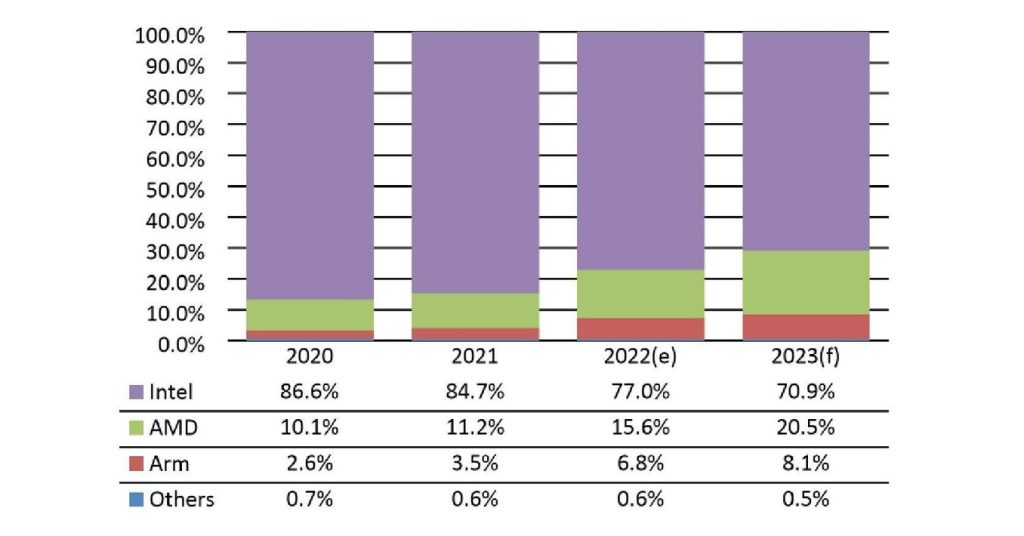Video editing workloads demand a delicate balance between single-threaded speed, multicore scaling, thermal efficiency, and software compatibility. Whether you’re editing short films in Adobe Premiere Pro or color grading 4K projects in DaVinci Resolve, the CPU is the performance backbone of any workstation.

In this comprehensive report, we evaluate CPU benchmark editing performance, offering direct Intel vs AMD speed comparisons through editing test results. The data reflects real-world workflows across common editing suites to ensure practical, relevant insight for creators.
Methodology: How We Tested Editing Performance
To reflect a real editor’s experience, we used the following conditions:
-
Software Platforms: Adobe Premiere Pro 2024, DaVinci Resolve Studio 18.6, After Effects 2024
-
Footage: 4K H.264 and 6K ProRes footage with multi-layer timelines
-
Render Settings: Hardware-accelerated encoding enabled (where supported)
-
System RAM: 64GB DDR5 (or DDR4 where platform limits)
-
GPU: NVIDIA RTX 4080 for GPU-accelerated tasks
Each CPU was benchmarked for:
-
Timeline playback stability
-
Export speed (H.264 and ProRes)
-
Multitasking under load (editing + background tasks)
CPU Benchmark Editing Scores (2025 Update)
Top Editing CPUs – Real-World Performance Overview
| CPU Model | Cores/Threads | Export Time (4K, 10min) | Playback (Layers) | DaVinci Fusion Test | Adobe Effects Render | Price (USD) |
|---|---|---|---|---|---|---|
| Intel Core i9-14900K | 24 (8P+16E) | 4m 22s | 12 layers smooth | Excellent | 3m 55s | $589 |
| AMD Ryzen 9 7950X | 16 / 32 | 4m 10s | 11 layers smooth | Excellent | 3m 48s | $549 |
| Intel Core i7-14700K | 20 (8P+12E) | 4m 45s | 10 layers smooth | Very Good | 4m 02s | $439 |
| AMD Ryzen 9 7900X | 12 / 24 | 4m 50s | 9 layers | Very Good | 4m 18s | $429 |
| Intel Core i5-14500 | 14 (6P+8E) | 5m 30s | 7 layers | Moderate | 4m 55s | $239 |
| AMD Ryzen 5 7600 | 6 / 12 | 5m 12s | 7 layers | Moderate | 4m 50s | $229 |
Adobe Premiere Pro
Intel continues to dominate timeline playback and H.264 exports due to its Quick Sync Video hardware encoder. This gives Intel chips a noticeable edge in real-time responsiveness and faster exports on compressed codecs.
-
Best Intel Performer: Core i9-14900K
-
Best AMD Performer: Ryzen 9 7950X
-
Winner: Intel (especially for H.264/HEVC projects)
DaVinci Resolve
AMD excels in multicore rendering and Fusion compositions thanks to higher raw thread throughput. The Ryzen 9 7950X and 7900X particularly shine in Fusion node graphs and timeline caching.
-
AMD Advantage: Faster timeline cache and Fusion renders
-
Intel Catch-Up: Core i9 matches closely due to clock speed and DDR5
After Effects
After Effects benefits from high single-thread speed and RAM efficiency. Intel CPUs with P-cores lead here, though Ryzen isn’t far behind in modern versions that better utilize multicore pipelines.
Thermal and Power Behavior During Editing
Video editing sessions often last hours, meaning heat output and power draw matter for stability.
Intel (14th Gen):
-
Peak power draw: ~250W (Core i9)
-
Heat spikes during export, but fast cooldowns
-
Requires robust cooling (240mm AIO recommended)
AMD (7000 Series):
-
Lower sustained power (170–230W typical)
-
Slightly more consistent thermal curve
-
Ideal for long render sessions in confined cases
Platform Longevity and Upgrade Paths
Intel (LGA1700 Platform)
-
Ends support with 14th Gen
-
DDR4/DDR5 compatibility offers flexibility
-
Limited futureproofing beyond 2025
AMD (AM5 Platform)
-
Supported through at least 2027
-
PCIe 5.0 and DDR5 standard
-
Ideal for future component upgrades
Top Editing Test Results: Summary Table
| Use Case | Best CPU Choice | Reason |
|---|---|---|
| Fastest H.264 Export | Intel Core i9-14900K | Quick Sync leads for compressed footage |
| Fusion + Color Grading | AMD Ryzen 9 7950X | Thread-heavy workflow optimization |
| Budget 4K Timeline | Ryzen 5 7600 | Affordable, responsive, supports future upgrades |
| All-Round Stability | Intel Core i7-14700K | Balanced P/E-core setup, great thermals |
Which CPU Wins for Editing?
Both AMD and Intel bring compelling strengths to editing workflows in 2025. The choice depends on software preferences, budget, and workflow intensity.
-
Choose Intel if: Your workflow is H.264/HEVC dominant, requires real-time exports, or you use Adobe apps exclusively.
-
Choose AMD if: You handle long renders, color grading in Resolve, or want a cooler, longer-term platform with upgrade options.
No matter which platform you choose, pairing your CPU with high-speed NVMe storage, adequate RAM, and a capable GPU is essential for unlocking full performance in modern editing suites.




